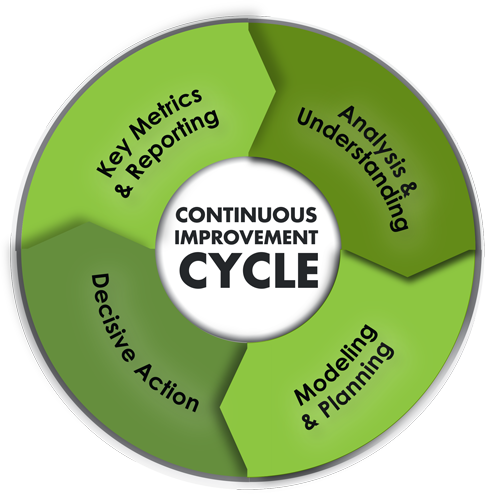I’ve always had the ability to solve problems quickly. From the time I was a kid putting together puzzles on the living room floor until today, I love figuring things out accurately and quickly. In business, speed is a differentiator. I’ve always found it invigorating to race against the clock.
Earlier in my career while at a meeting to discuss results of a marketing program with a top eyewear company, I said, “I am not sure what we are doing here. This program is working! We are killing our number one competitor with this program so keep doing this and let’s move on.” The boss looked at me and said, “You are about two or three meetings ahead of the rest of us.” I stood up and said, “Great. Call me when you catch up.”
I love change and reject the standard answer, “That’s the way we have always done it.” In my drive to achieve results I have found that companies share many of the same problems and dread change. Being satisfied with the status quo they don’t embrace the change necessary to get dramatically better results.
But change needs to be implemented methodologically and for a reason, otherwise it can lead to chaos. The Homza Continuous Improvement cycle is an illustration of how I think about change in a business.

Continuous improvement is about understanding where you are today, developing a plan, taking decisive action and then measuring the results of those actions. And then, doing it over and over again. Applying resources to problem solving generates higher ROI. It starts with properly setting up your key metrics and reporting mechanisms. Skilled analysis and keen insight identify areas of opportunity for action that lead to improvement. The cycle is repeatable and never stops. That is a key concept. Insight today will be second nature a few months from now and that creates the opportunity for more learning, more growth and higher ROI. That ROI momentum is built by applying resources to the cycle. Failure to start the improvement cycle leads to stagnancy. Continuing to work the improvement cycle builds momentum, pushing you up the success curve.
When speaking to an executive of a multi-billion dollar company some years ago, I noticed a cube on his desk inscribed with the top 10 reasons of why they missed their budget. I was working for another multi-billion company at the time and when I picked up the cube I laughed and said, “These are the same reasons we have.” He laughed and said, “Yeah, I know. It’s the same everywhere. Here, we save time. We just say, #4 or #5. That’s why we missed our budget.”
These are just a couple of examples of why there is so much room for improvement in business. Figuring things out, doing things differently, moving quickly, and seeing improvement energizes me.
My mission is to engage with businesses across the globe to improve financial literacy. My copyright lawyers described my book for entrepreneurs as a guidebook for financial literacy in real life circumstances. That is the essence of the Homza difference. It reminds me of what Ross Perot said when he ran for president. He said everyone in this country understands sports; few people understand business.
If I can improve the financial IQ of those running businesses today, the results will be tremendous.
